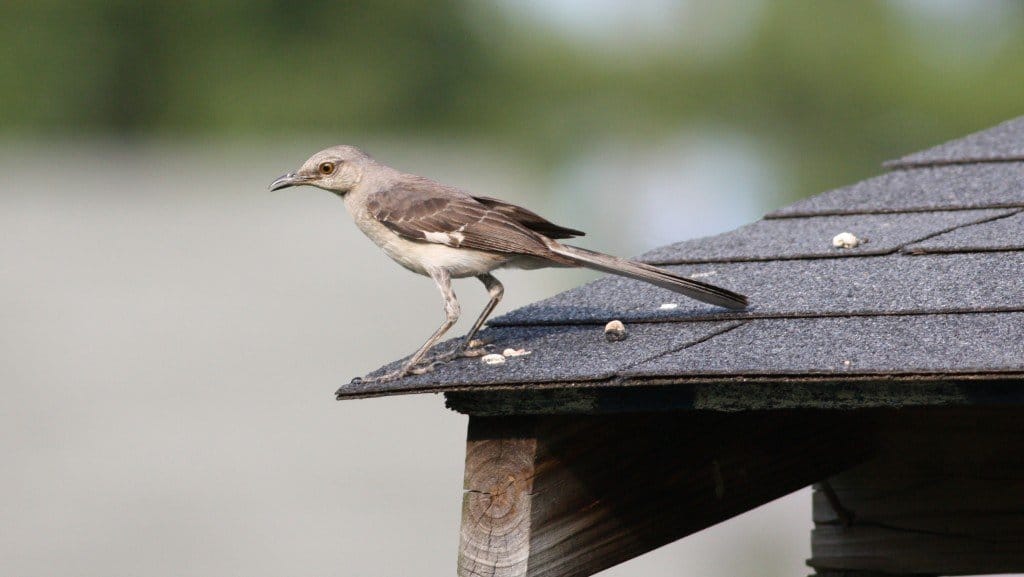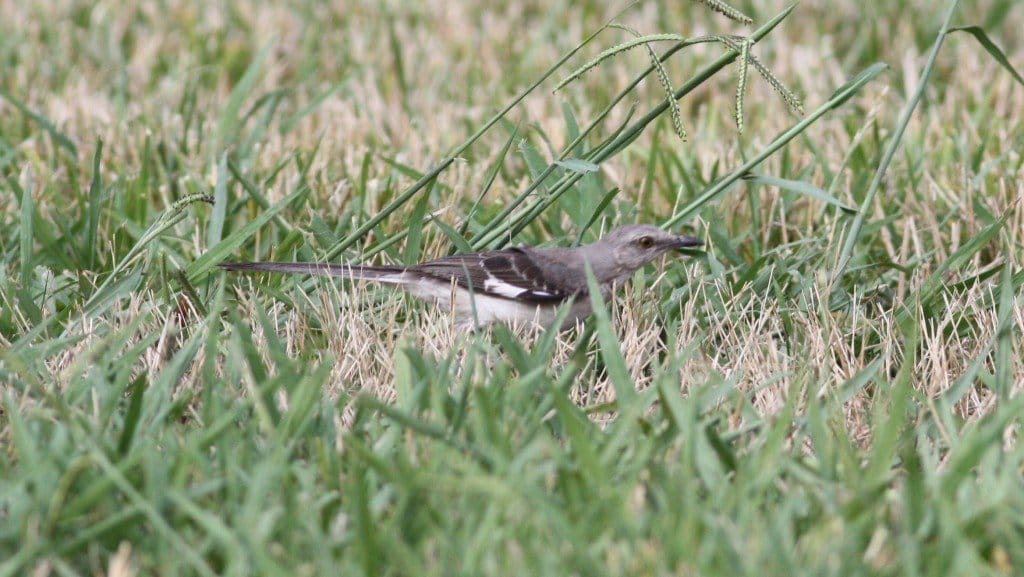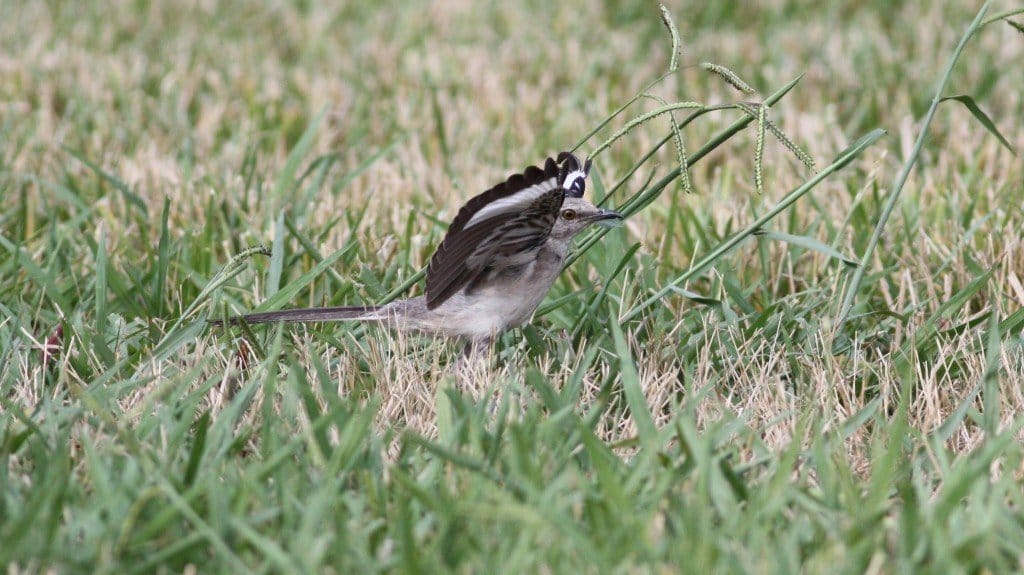Harper Lee famously wrote that it’s a sin to kill a Mockingbird. Because they don’t do nothing but sing for us all day long, she said. With all due respect to Ms Lee’s prodigious literary talent, she’s never had to deal with the Northern Mockingbirds in my neighborhood. Not that I would ever go so far as to kill one – me and Atticus Finch have that much in common – but the Mockingbirds of Orange County, North Carolina, are hardly the innocent naifs Lee needs them to be to in her metaphor. The pair that set up residence in the bushes outside my home seem to take great pleasure in mocking me, with near dead on imitations of Towhees, Carolina Wrens, and Great Crested Flycatcher, not to mention car alarms, motorcycles and garbage truck back-up alarms. They are nothing if not talented. Mimus polyglottos, indeed.

Northern Mockingbirds are distributed widely across the bottom half of the United States. They are not uncommon birds anywhere they’re found because they’re so adaptable to the marginal habitat that exemplifies urban and suburban America. But it’s in the south where they really come into their own. We have a relationship with them, from Harper Lee’s classic to the fact that no fewer than five states, all in the south, have so honored the boisterous Mimid at their state bird. The Mockingbird, garrulous and gray-clad, is as southern as Pecan Pie and car horns than play Dixie.

Yesterday afternoon, while my toddler son and I made our nightly post-dinner walk to the neighborhood playground, I watched as one of our neighborhood Mockers foraged in the grass nearby. They scratch and stomp, like skinny gray robins chasing after bugs that flee before them. This individual was even employing the spread-wing display, the two step motion in which the Mockingbird flashes the white batches in its wings as it slowly works over its patch. There’s disagreement among ornithologists as to the nature of this little display, whether it’s territorial in nature or whether the flashing white is intended to scare up bugs hidden in the grass so that the Mocker can snap them up.

For what it’s worth, this individual was more or less alone in the lawn, nor did I see it strike at unseen invertebrates. There were no scientific discoveries to make while playing with my kid on this day.
The mystery continues. A secret only they know. Maybe they have more in common with Boo Radley than I thought.













I’ve seen the spread wing display used for both hunting and territorial defense. So I think the answer is both plus probably uses we don’t yet know about!
Hmm. Had I remembered that post I might have picked something different to write about…
Are you kidding? This post is great…now we need to synthesize both posts to make a super spread wing post!
Now that we live in town, we have a Mockingbird in the tree outside. After having a wonderful time keeping everyone up all night long (we live under a streetlamp) with renditions of too many songs to count, including the first mockingbird imitation of a red-winged blackbird I’ve ever heard, the beast has taken exception to a particular one of the neighborhood feral cats. His, or her, repeated sharp CHIRP CHIRP CHIRP punctuates our days with the information that the grey tiger cat is somewhere in sight. The mockingbird chirps at the other cats, but for some reason a special ire is reserved for the grey tiger cat. Repeated dive bombings and harassment from inches away, along with that loud and repeated alarm call used to bring me to the window to see what was up. Now I know it’s just one poor beleaguered grey tiger cat trying to get to a different hiding place.